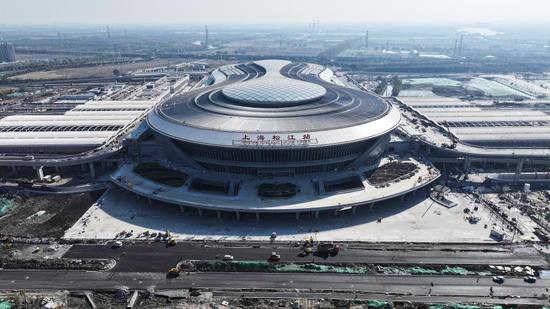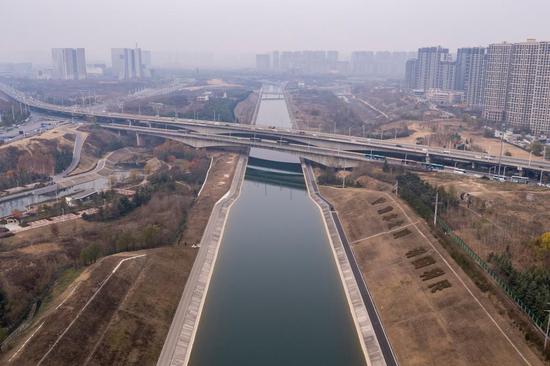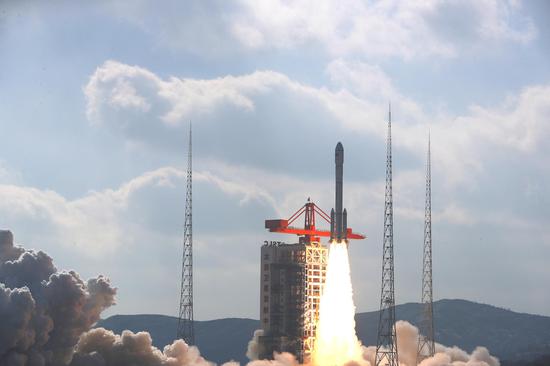Economist: Fiscal, monetary policies' should be front-loaded at a rapid pace'
China's GDP growth target for 2025 could be set at around 5 percent, unchanged from this year, after a top-level meeting outlined more proactive and effective macroeconomic policies for the coming year, to tackle various challenges head-on and push the economy on an upward trajectory, said a senior economist.
"To achieve this goal, the fiscal and monetary policy toolkit should be front-loaded with great intensity and at a rapid pace, to stay ahead of market expectations and bring about better synergy," Luo Zhiheng, chief economist at Yuekai Securities, said in an interview with China Perspective.
China Perspective is an interview series presented by China Daily, characterized by insightful conversations with senior economists on significant economic issues.
Luo's comments came after policymakers set next year's agenda at the annual Central Economic Work Conference last week, adopting a "more proactive" fiscal policy for the first time and shifting its monetary stance to a "moderately loose" approach, marking an end to a 14-year run of prudent monetary policy.
Confronted with a complex web of economic challenges, ranging from sluggish domestic demand to external pressures stemming from global economic weakness and ongoing trade tensions with the United States, China needs a proactive, countercyclical approach to shore up growth, Luo said.
In particular, China has made it clear that it will raise its deficit ratio in 2025, Luo said, adding that a deficit target of as high as 4 percent of its GDP could be considered next year, up from the current 3 percent goal set for 2023.
"The deficit ratio is not just about the scale of fiscal support, but also about its ability to anchor market expectations, as it is widely interpreted as a barometer of the authorities' determination to prop up the economy and address persistent challenges," Luo said.
Given the uncertainties surrounding fiscal revenue and the pace of special bond issuances, policymakers should be prepared to promptly augment budgets within the year to accelerate expenditure growth and better leverage the countercyclical function of fiscal policy, Luo said.
In another move to enhance the effectiveness of the fiscal policy, Luo said that efforts should be made to expand the scope of usage of local government special-purpose bonds and promote the project-oriented allocation approach of these bonds.
The State Council, the country's Cabinet, said on Monday that local authorities will have more autonomy and flexibility in using these bonds, with a negative list management mechanism specifying the areas where they can't be used.
Complementing the fiscal policy initiatives, monetary easing measures, including cuts to the reserve requirement ratio and interest rates — which were also explicitly mentioned at last week's annual meeting — stand as another key component of the countercyclical response, Luo said.
"The People's Bank of China has about 0.5 percentage point of room to maneuver in terms of further interest rate cuts in 2025," Luo said, noting that it must carefully calibrate such moves to support economic expansion, while also factoring in potential implications for the exchange rate and the profitability of the banking sector.
According to the central bank, the current weighted average RRR for financial institutions is around 6.6 percent. This level still leaves ample room for further reductions when compared to the policies of major central banks around the world.
These countercyclical measures should be delivered on the ground as early as possible, so as to get ahead of the curve, shape market sentiment and bolster overall domestic demand, rather than merely reacting to the evolving circumstances, Luo said.
In addition, expanding domestic demand is high on the government work agenda next year. While the shift from an investment-driven to a consumption-driven economy is a necessary and inevitable process, it is not an overnight transition, Luo added.
Investment and consumption are the yin and yang of domestic demand — it's not an either-or situation; the goal is to find the optimal mix of the two complementary forces to ensure well-rounded growth, Luo said.


















































 京公网安备 11010202009201号
京公网安备 11010202009201号